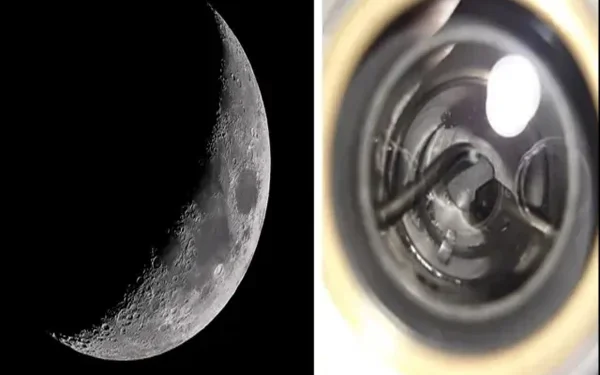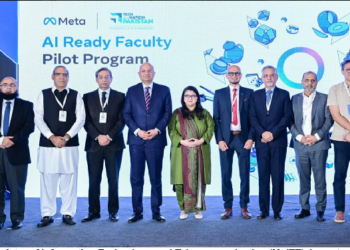Introduction
In a groundbreaking development that could redefine the future of space exploration and lunar colonization, Chinese scientists have successfully developed a solar-powered technology capable of extracting water, oxygen, and fuel from the moon’s soil—also known as lunar regolith. This innovation represents a significant step toward sustainable human presence on the Moon and could eventually support broader ambitions, including Mars missions and long-term space habitation.
The Challenge of Sustaining Life on the Moon
For decades, scientists have been investigating ways to make lunar colonization possible. One of the greatest challenges of space missions beyond Earth’s orbit is the need to transport massive quantities of supplies, including water, fuel, and breathable air. The cost and logistical complexities of delivering these resources from Earth make long-term habitation on the Moon or Mars extremely difficult.
To address this, the concept of in-situ resource utilization (ISRU)—harvesting local resources for use—has gained increasing importance. However, most existing ISRU proposals have relied on highly complex, energy-intensive processes that are impractical for extended lunar missions.
China’s Solar-Powered Solution
A team of researchers led by Luo Wang from the Chinese University of Hong Kong has now demonstrated that a simple, solar-powered reactor can achieve this vital resource extraction using lunar regolith and carbon dioxide—two materials abundantly available on the Moon and from astronauts themselves.
The Reactor and Its Functionality
For the experiments, the research team used samples of lunar soil brought back to Earth by China’s Chang’e-5 lunar mission. These soil samples were subjected to high-intensity sunlight inside a custom-built solar reactor.
The reactor mimics conditions found on the Moon’s surface and uses solar energy for multiple purposes:
- Heat generation: Sunlight provides the heat needed to drive chemical reactions.
- Water extraction: Heat liberates water molecules trapped in the lunar regolith.
- Catalytic reaction: The soil acts as a natural catalyst, facilitating reactions between the extracted water and carbon dioxide exhaled by astronauts.
The result? The formation of carbon monoxide, hydrogen, and oxygen—three critical components that can be used for life support systems and rocket fuel.
From Theory to Application: Why This Matters
While earlier studies had shown that lunar soil contains water-bearing minerals, practical techniques to extract this water remained elusive. Most previously proposed methods required large amounts of energy, specialized machinery, or the import of Earth-based catalysts.
China’s innovation stands out because:
- It uses only local materials (regolith and carbon dioxide).
- It operates on solar power—a free and renewable resource on the Moon.
- It integrates multiple resource extraction processes into a single, compact system.
This holistic approach simplifies infrastructure requirements for future lunar bases and significantly reduces dependency on Earth-based supply missions.
Scientific Details and Chemical Reactions
In the reactor, the chemical reactions proceed as follows:
- Water Extraction:
- Lunar soil contains hydroxyl groups (–OH), which release water vapor when heated.
- Sunlight heats the soil, allowing water molecules to evaporate.
- Water-Gas Shift Reaction:
- Extracted water (H₂O) reacts with carbon dioxide (CO₂) from astronauts’ breath.
- The reaction yields carbon monoxide (CO), hydrogen gas (H₂), and oxygen (O₂).
These products can be stored and used for various applications:
- O₂ for breathing
- H₂ and CO as rocket fuel components or energy sources
Lunar Regolith as a Catalyst
Interestingly, the lunar soil not only acts as a raw material but also functions as a catalyst. Researchers discovered that minerals like ilmenite and olivine present in the regolith facilitate the desired chemical reactions without requiring additional catalytic agents.
Environmental and Mission Efficiency Advantages
The advantages of this new technology go beyond just extracting materials. It is also environmentally sustainable and mission-efficient:
- No toxic by-products: The reactions do not produce hazardous waste.
- No external catalysts required: Lunar soil itself acts as a catalyst.
- No fuel consumption for operations: The entire process is powered by solar energy.
- Lightweight and scalable design: Ideal for modular expansion as lunar missions grow.
Implications for Future Lunar Missions
This development comes at a time when multiple space agencies and private enterprises—including NASA, SpaceX, the European Space Agency (ESA), and others—are planning manned missions to the Moon as part of the Artemis Program and beyond.
Key implications include:
- Self-Sustaining Lunar Bases: With local water, oxygen, and fuel production, missions could stay on the Moon for longer durations.
- Reduced Mission Costs: Less reliance on Earth-based resupply missions significantly cuts down overall mission budgets.
- Foundation for Mars Missions: Technologies tested on the Moon could later be adapted for Mars, which has similar regolith properties.
China’s Expanding Role in Space Exploration
China’s space program has seen remarkable growth over the past two decades. From launching space stations and lunar missions to planning Mars sample-return missions, the country has made its ambitions clear.
The success of the Chang’e-5 mission in bringing back lunar samples was already a milestone. Now, using those samples to develop practical life-support technologies positions China as a key player in the future of space colonization.
Global Collaboration and Competition
This technological milestone also contributes to the growing space race between nations. While there is an element of geopolitical competition, it also opens the door for potential collaboration.
- International Lunar Research Station (ILRS): China and Russia are co-developing this initiative.
- Artemis Accords: Led by NASA, this framework seeks peaceful and cooperative space exploration among partner countries.
Innovations like China’s reactor could eventually find shared use in multinational missions, benefiting all humankind.
Future Directions and Challenges
Although the technology shows promise, several challenges remain:
- Scaling the system: The prototype needs to be adapted for large-scale use on the Moon.
- Testing in real lunar conditions: Earth-based simulations may not perfectly replicate lunar temperature fluctuations and microgravity.
- Storage and distribution systems: Extracted gases must be safely stored and transported within the lunar base.
Researchers are now working on refining the design and hope to test a pilot system on the Moon in future missions.
Conclusion
China’s successful development of solar-powered technology to extract water, oxygen, and fuel from lunar soil marks a significant advancement in space resource utilization. By simplifying the process and relying solely on in-situ resources and solar energy, this innovation addresses some of the biggest hurdles facing sustainable lunar colonization.
As space agencies gear up for the next phase of human spaceflight, technologies like these will be crucial in turning science fiction into sustainable reality. With continued investment, testing, and international cooperation, the dream of establishing a permanent human presence on the Moon is becoming more attainable than ever before.
























